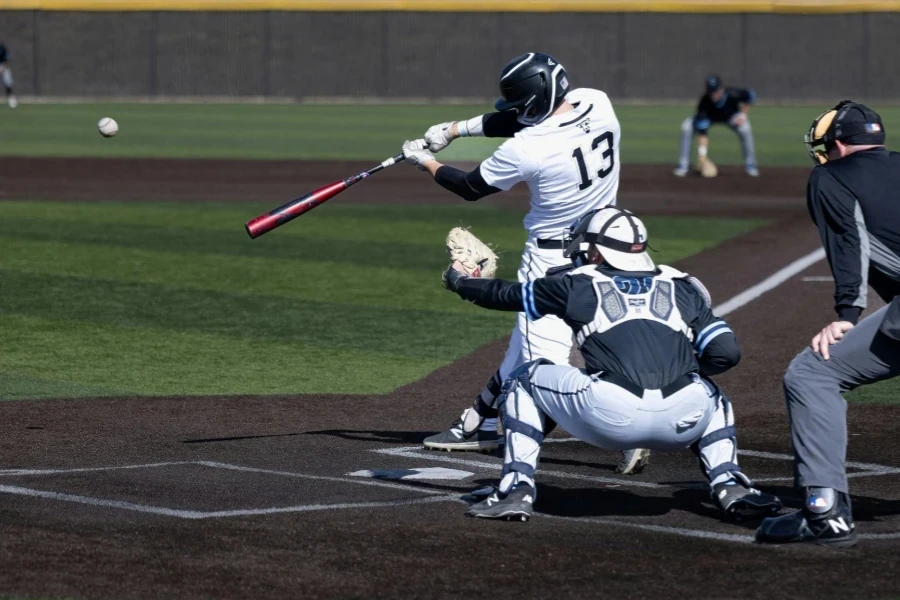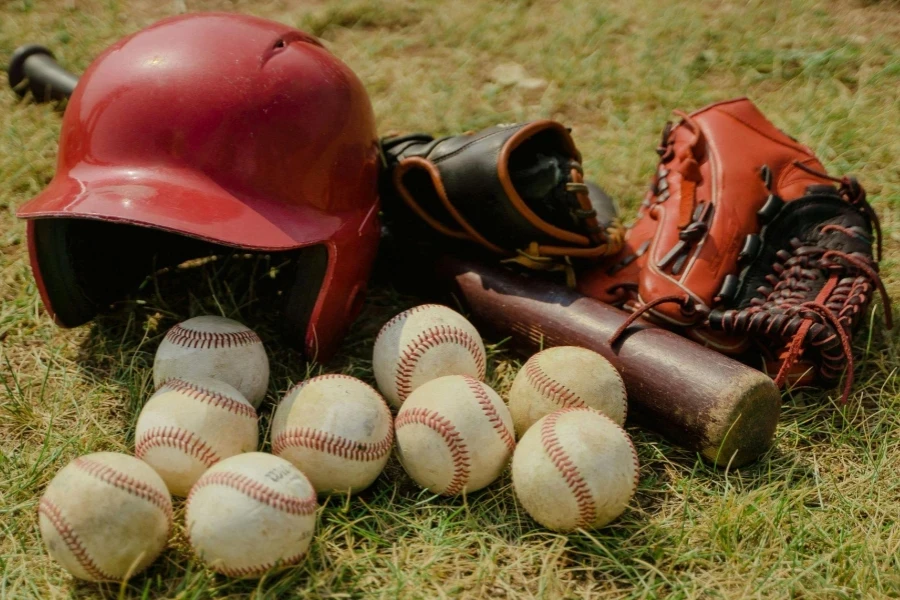Table of Contents
● Introduction
● Key Types and Uses of Baseball Batting Gloves
● Current Market Trends for Baseball Batting Gloves
● Key Factors to Consider When Choosing Baseball Batting Gloves
● Top Models and Their Features for 2025
● Conclusion
Introduction
Baseball batting gloves are essential equipment designed to enhance a player’s grip, comfort, and overall performance. Made from a variety of materials like leather and synthetic fabrics, these gloves provide vital protection against blisters, absorb shock, and help players maintain a firm hold on the bat. With features such as moisture-wicking fabric and added padding, batting gloves are engineered to offer both comfort and durability, ensuring that athletes can perform at their best throughout long games or intense practice sessions. The right pair of gloves can make a noticeable difference in a player’s swing, providing both support and confidence at the plate.
Key Types and Uses of Baseball Batting Gloves

Baseball batting gloves serve to enhance a player’s grip and comfort, reducing the chances of the bat slipping during a swing and providing protection against the impact of repeated contact. These gloves are designed with both performance and durability in mind, aiming to improve the overall batting experience. With a focus on functionality, batting gloves help protect the hands from blisters, calluses, and shock, which can occur during extended gameplay. The right pair can make a significant difference in a player’s ability to focus on their swing and overall performance.
Leather vs. Synthetic Materials
The material used in baseball batting gloves is crucial to their performance, comfort, and durability. Leather gloves are often favored for their natural feel and ability to conform to the hand over time, offering a premium fit and grip. However, they require regular maintenance and may lose some elasticity with prolonged use. Synthetic materials, in contrast, are typically lighter, more durable, and easier to maintain. These gloves are often more breathable and provide consistent performance in varying conditions, though they may not offer the same luxurious feel as leather. Both materials have their advantages, making them suitable for different player preferences and needs.
Shock Absorption and Padding Features
Shock absorption is an essential feature in many modern batting gloves, as it helps to minimize the impact felt by the hands when the bat makes contact with the ball. Padding in key areas, such as the palm and fingers, reduces discomfort and prevents injuries caused by repeated impacts. High-density foam, gel inserts, and strategically placed cushioning allow players to maintain a firm grip while protecting their hands. This feature is particularly valuable for players who face fast pitches, as it absorbs much of the force, improving both comfort and performance during the game.
Weather-Specific Gloves
Baseball batting gloves are also designed with specific weather conditions in mind. In cold weather, gloves are typically thicker, offering insulation and warmth without compromising on flexibility. These gloves use materials that retain heat while still allowing for movement, keeping the hands warm during chilly conditions. Conversely, gloves designed for hot weather prioritize breathability, with lightweight, moisture-wicking fabrics that help to keep hands dry and prevent slipping from sweat. For versatile use, some gloves combine both features, making them suitable for varying environmental conditions and helping players perform their best regardless of the weather.
Current Market Trends for Baseball Batting Gloves

The North American Baseball Batting Gloves market is experiencing notable growth, driven by several factors including technological advancements and changing consumer preferences. Industry experts estimate the market’s compound annual growth rate (CAGR) from 2024 to 2032 to be robust, with projections indicating significant market expansion. In particular, the market in the United States is expected to maintain dominance due to advancements in materials and performance features, along with the presence of major manufacturers. As new product types and improved materials gain traction, such as those focused on durability and comfort, this trend is expected to accelerate demand across various segments, including both youth and adult batting gloves.
Technological Innovations in Design
Recent advancements in batting glove design have focused on enhancing player comfort and performance. Shock absorption technologies and moisture-wicking fabrics are two key innovations that address common concerns. Shock absorption materials help reduce the impact on hands during powerful swings, improving comfort and minimizing the risk of injury. Meanwhile, moisture-wicking fabrics keep hands dry, preventing slippage and maintaining grip, even in hot and humid conditions. These technologies are not only improving player performance but also increasing the lifespan and functionality of the gloves, making them more adaptable to a wide range of weather conditions and playing styles.
Popular Price Points
The price range for baseball batting gloves in 2025 reflects both the materials used and the added features such as durability and advanced technology. Premium gloves, featuring high-tech materials like advanced padding and moisture-wicking fabrics, are typically priced over $100, targeting elite players who seek top-tier performance. Mid-range gloves, which balance quality and cost, are priced between $40 and $60 and appeal to most players looking for a durable, comfortable glove without the premium price tag. For budget-conscious players, gloves under $30 offer a more basic design but still benefit from improved durability, thanks to the use of stronger construction methods. The varying price points cater to a broad spectrum of needs, from casual players to professionals.
Key Factors to Consider When Choosing Baseball Batting Gloves

Fit and Flexibility: When choosing baseball batting gloves, fit and flexibility are paramount. A glove must fit snugly but allow enough movement for a player to grip the bat comfortably and execute a natural swing. If the glove is too tight, it may restrict hand movement, affecting swing mechanics and grip strength. Conversely, if it is too loose, it can cause the glove to slip during play, decreasing control over the bat. Many modern gloves feature stretchable or adjustable wrist straps to ensure a more tailored fit, offering a balance between comfort and flexibility. The best batting gloves often combine a flexible design with materials that adjust to the player’s hand over time, improving the overall feel and grip.
Grip and Comfort Features: The grip and comfort features of a batting glove are essential for optimal performance. A glove with advanced grip technology, such as tacky palms, can significantly enhance a player’s ability to maintain control over the bat, especially in humid or rainy conditions. The palms are often coated with rubberized or silicone materials that improve traction and prevent slippage. Comfort is equally important, as batting gloves that offer cushioning or shock-absorbing padding reduce hand fatigue and protect against blisters. With the right combination of grip and padding, a batter can experience more consistent swings, reducing the risk of mishits that could result in discomfort or injury.
Breathability and Moisture Control: Breathability and moisture control are crucial for maintaining player comfort during long games or practice sessions. A glove that is too hot or sweaty can be distracting and uncomfortable, potentially leading to blisters or reduced performance. Gloves designed with mesh panels or perforated leather allow air to circulate, keeping hands cool and dry. Additionally, moisture-wicking fabrics help draw sweat away from the skin, enhancing grip and comfort. These features are particularly valuable during hot and humid conditions, where the risk of sweaty hands can diminish the effectiveness of a player’s grip and control over the bat.
Wrist Support and Customization: Wrist support and customization are key elements for ensuring a secure and comfortable fit for all players, regardless of hand size. Gloves with adjustable wrist straps allow for a personalized fit, ensuring the glove stays in place without being too tight or too loose. This customization not only enhances comfort but also provides support to the wrist, reducing the risk of strain during swings. Some gloves offer additional wrist support with thicker, more durable materials around the wrist area, which can help stabilize the joint during high-speed batting. For players who need extra flexibility or support, choosing gloves with customizable wrist straps can make a significant difference in overall comfort and performance.
Top Models and Their Features for 2025

High-Performance Gloves for Pro Players
Top-tier gloves designed for professional players are distinguished by their shock-absorbing technology, durable leather material, and highly flexible fits. Models like the Franklin CFX Pro and Bruce Bolt Chrome Series cater to athletes demanding the best grip and wrist support. These gloves feature cutting-edge padding to reduce sting on mishits, a critical factor in professional games where precision and comfort are paramount. Professionals also value these models for their advanced technologies, which ensure optimal performance during high-pressure moments. The latest designs also include features like moisture-wicking fabric and reinforced stitching, making them a staple for any serious player looking for durability and control.
Budget-Friendly Options for Amateur Players
For amateur players and beginners, affordability without compromising on quality is key. The market for entry-level gloves is growing, with options like the Franklin CFX Pro Batting Gloves providing excellent grip and durability at a lower price point. These gloves often blend leather with synthetic materials to maintain flexibility and comfort while keeping costs down. While they may lack the heavy padding of higher-end gloves, their design still ensures a decent level of protection and a comfortable fit, making them ideal for recreational players. Additionally, budget-friendly models typically emphasize ease of maintenance and lightweight construction, offering a balanced approach for players at the start of their careers.
Seasonal and Weather-Specific Models
Seasonality plays a significant role in choosing the right baseball batting gloves, as players need gloves that can perform across a range of weather conditions. Cold-weather models, such as those featuring insulated materials or extra padding, help to keep the hands warm and functional during colder months, preventing stiffness and discomfort. On the other hand, summer gloves emphasize breathability, often incorporating mesh or lightweight synthetic fabrics to allow for moisture control and optimal airflow. These seasonal gloves not only improve comfort but also ensure consistent performance, regardless of the temperature, by reducing sweat buildup and enhancing grip during hotter games. Whether designed for extreme heat or cold, these weather-specific models are a critical part of a player’s gear lineup.
Conclusion

As the baseball batting glove market continues to evolve, several key factors shape purchasing decisions. Quality and comfort are paramount when selecting gloves, as these elements significantly impact players’ performance on the field. A focus on advanced features like grip technologies, breathable materials, and enhanced protection for hands is essential for businesses looking to meet the growing demand for high-performance gear. Additionally, options catering to various levels of players, from professionals to amateurs, ensure suitability for different needs. Understanding these factors and selecting the right product based on player preferences and market trends will remain crucial in 2025.




